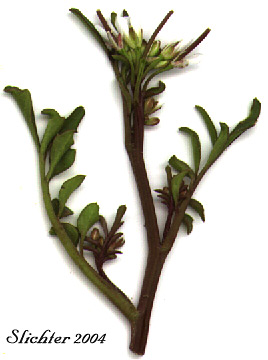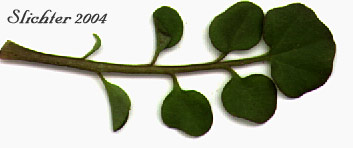
Cardamine oligosperma
Synonyms: Cardamine oligosperma var. kamtschatica, Cardamine umbellata

Little western bittercress is a taprooted annual or biennial wildflower with one to several simple to branched stems from 10-40 cm high. The herbage varies from nearly glabrous to fairly densely covered with short, stiff hairs. The numerous basal leaves form a rosette of pinnate leaves. The terminal leaflet is largest, measuring up to 3 cm long and is rounded in shape but with shallow lobes. The 4-10 lateral lobes are smaller, nearly sessile to petiolate and are obovate to ovate or suborbicular in shape. Their margins are entire to shallowly lobed. The lateral lobes measure 3-20 mm long.
The inflorescence is a raceme that looks umbellate as they may be flat topped. The ascending to erect pedicels are 5-15 mm long and the sepals are 1-2 mm long. The white petals measure 2-4 mm long. The erect siliques are 1.5-2.5 cm long and 1.2-1.5 mm wide. The outer covering of the siliques is glabrous to sparsely covered with short, stiff hairs. When ripe, the siliques readily spray or shoot the small seeds when the silique is touched.
The little western bittercress blooms much of the year in moist climates, but is limited to early spring and perhaps in fall in drier habtitats. When disturbed, the dry siliques will "throw" their seeds away from the "parent' plant.

Western Bittercress: Cardamine occidentalis - Perennial. Rhizomatous. Petals are 3-7 mm long.
Pennsylvania Bittercress: Cardamine pennsylvanica - Perennial. Taprooted. The lateral lobes of the leaves are narrower (linear to linear-oblanceolate). Petals 2-4 mm long. The siliques are narrower, measuring from 0.7-1 mm wide.
Little western bittercress is a plant of moist ground from open places to open woods. In urban areas, it is often found on disturbed ground and is common along roadsides, in gardens and yards.
Little western bittercress may be found from Siberia and east to Alaska. It is then found south through British Columbia to the Pacific Northwest and hence south to California. It is found eastward from the west coast to the Rocky Mountains.